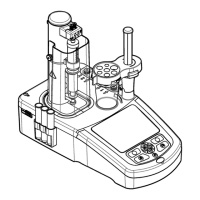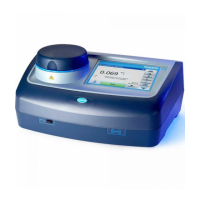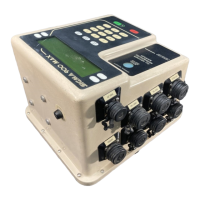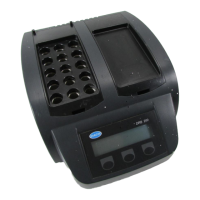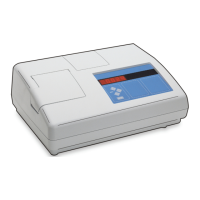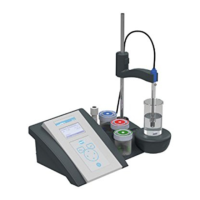Free Chlorine
50081_Chlorine_Free_Forward.fm Page 93
Free Chlorinec
• To avoid loss of chlorine, be careful not to agitate the sample when measuring or pouring.
• Sample glassware must be cleaned and pretreated to satisfy any chlorine demand before the sample is introduced. See Section
7.2 Container Pretreatment on page 63 for additional information.
• Always use organic-free water for sample dilution (Cat. No. 26415-49).
• When sampling tap water, let the faucet run for at least 4–5 minutes prior to collecting the sample.
• A convenient test sample can be prepared by diluting Chlorine Standard Solution (Cat. No. 14268-10) with deionized (DI) water.
• Rinse the electrode, temperature probe, and anti-diffusion tip with deionized water before every titration.
• Download the “Certificate of Analysis” (COA) to obtain the exact concentration of any unopened bottle of Hach titrant or standard
solution. See Obtaining the Certificate of Analysis for Hach Reagents on page 41.
• Hach buffer reagents for chlorine titrations are highly recommended for this analysis.
• Never substitute buffers designed for calibrating pH meters. They may contain dyes that interfere with amperometric titration.
• Never use buffers contaminated with mold or bacteria.
• Adjust the contrast of the display by accessing the Methods menu and then pressing 7
to lighten or 0 to darken.
• A distinction is drawn between running a new test and a new sample. Each test is a replicate run of the current or previous
sample analysis. The AutoCAT automatically tracks the results of a series of tests, and automatically calculates the mean and
standard deviation for all the results. Each test is given a different number, all of which are listed under the same Sample ID.
When starting a new sample, a new ID is assigned.
• The AutoCAT can accommodate any sample size. Standard Methods recommends a default volume of 200 mL. The volume can
be adjusted to expand the test range.
• The analysis data may be analyzed repeatedly from the Zoom Range Determination window, in manual (MEPD) and/or automatic
(AEPD) modes. The results are not stored until accepted.
• The AutoCAT calculates the chlorine concentration based on the sample volume. Make sure that the sample volume is correct.
• Press the STOP key any time to interrupt instrument operation. The user will be given the option to resume, restart, or quit.
• Press the CHECK MARK any time during data acquisition to halt data collection.
• Press the DEL key during any timer period (except Start Timer) to immediately exit the timer and proceed to the next step in
the procedure.
• Flush the burette each day before the first sample test or calibration is performed. See Daily Start-up on page 26.
• Flush the burette when changing titrants. See Changing Titrants on page 25.
Amperometric Forward Titration
Titration Workstation
0.100–5.000 mg/L as Cl
2
*
Scope and Application: For drinking water; USEPA accepted for reporting**
* Higher ranges can be determined through sample dilution. See Section 5.2.3.3 Dilution on page 46.
**Procedure equivalent to USEPA method 330.2 and Standard Methods 4500-Cl.D. for drinking water.
Sample Tips and Techniques
Reagent Tips and Techniques
Instrument Tips and Techniques

